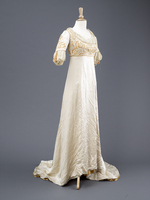Board Games - The Roll of Knucklebones and Dice Throughout History
#SUBHEADING#'Shake Them Bones'#SUBHEADINGEND# Bones have been playthings from time immemorial. In Medieval and Roman times it was very popular to play games with animal bones; usually it would be ankle bones or knuckle bones from sheep. The most popular game was the forerunner for the modern game of 'Jacks'. Players threw knucklebones into the air and caught as many as they could on the back of their hands or picked up as many bones as they could from the ground while one was in the air. This game is immortalised in a terracotta sculpture in the British Museum from about 800 BC. As each of the four sides of a knuckle bone is different, it was similar to a four sided dice, each of the four sides would be given a value, they would be used for gambling games. Different throws have received distinctive names, such as riding the elephant, peas in the pod, and horses in the stable. In Roman times the winning throw would be known as Venus and the losing throw as canis 'dog' and used for board games such as the Medieval predecessor of Backgammon, 'Game of Twelve Lines'. #SUBHEADING#How do you score knucklebones?#SUBHEADINGEND# 1 pt for the 'flat' side; 3 pts for the 'concave' side; 4 pts for the convex side; 6 pts for the 'twisted' side. #SUBHEADING#Dealing with Dice in History#SUBHEADINGEND# The ancient Egyptians and Romans also used dice for gambling and many board games, knucklebones developed into dice and they were made of antler and bone for the most part but there are examples of them being made from other materials. Dice have also not always been made in the shape of a cube. Stone dice used in Egypt in about 250BC were 10 sided. Roman coin depicting Fortuna #IMAGE# In ancient times the throw of a dice was not just considered to be luck, the outcome was believed to be controlled by the gods and casting dice was a way of predicting the future. The Roman goddess, Fortuna, daughter of Zeus (known to gamblers as Lady Luck), was believed to determine the outcome of a throw. In English, dice are sometimes colloquially referred to as "bones", as in "shake them bones" but ivory, amber, wood, metal, and stone materials have been commonly used. Although the use of plastics, including cellulose acetate and bakelite is now nearly universal. In Medieval times many games involved betting, even games such as Chess, Backgammon and Bowls. Gambling with dice was the most popular in England particularly in London in the 1500's, and was played in all ranks of society, even the clergy. In England, Richard the Lion Heart and King John both gambled with dice and King Henry VIII lost the bells of old St Paul's church on a throw. #IMAGE# Dice games were played in many English inns and sometimes dice were used to fool gullible gamblers. Many dice that have been excavated and x-rayed have revealed small mercury weights inside them so they would deliberately fall on one number. In medieval times loaded dice like this were called 'Fulhams', presumably Fulham in London was notorious as the haunt for dice cheats.
 Board games - Boards and Counters
Board games - Boards and Counters
The history of toys and games goes back thousands of years. Throughout Hull's museum collection's there are many objects to show you the different kinds of games that were played in Britain and how they have developed through the centuries. See how this has happened, sometimes in the strangest of places - Come and play!
 The Survival of Games - War Games
The Survival of Games - War Games
The history of toys and games goes back thousands of years. Throughout Hull's museum collection's there are many objects to show you the different kinds of games that were played in Britain and how they have developed through the centuries. See the creation of War Games - Come and play!
 The Survival of Games - Hunt and Race Games
The Survival of Games - Hunt and Race Games
The history of toys and games goes back thousands of years. Throughout Hull's museum collection's there are many objects to show you the different kinds of games that were played in Britain and how they have developed through the centuries. See the creation of Hunt and Race Games - Come and play!
 Home and Leisure Life
Home and Leisure Life
This section contains stories about what people used to do in their leisure time and about their homes. People have always played games since ancient times. Some stories explore the types of pastimes there once were. Leisure time was not just about playing games. Sewing at home was once a very popular hobby. One story is about the Singer sewing machines that were often used. Leisure activities that took place outside the home included watching puppet theatres. Two stories take a look at what everyday items in the home are made from, including toothpaste!
 Roman Coin Designs (part 1). Emperors, Empresses, Gods and Goddesses
Roman Coin Designs (part 1). Emperors, Empresses, Gods and Goddesses
Getting information across the empire was no easy task for the emperor. Romans had no newspapers, radio or television and most of the population was illiterate. Coins were a good way for emperor to get his ideas across and show images which celebrated the power and glory of Rome. Read about just some of the designs and why they were used, starting with Emperors, Empresses, Gods and Godesses.






